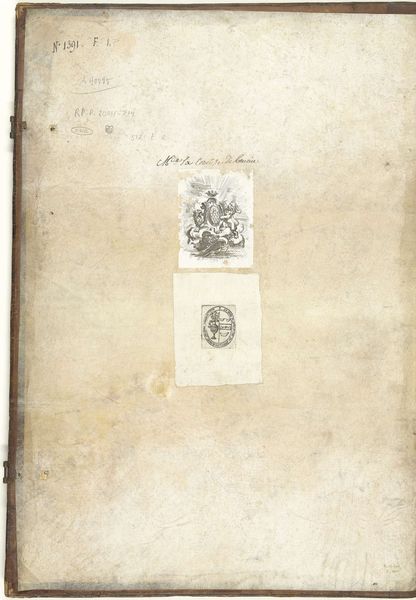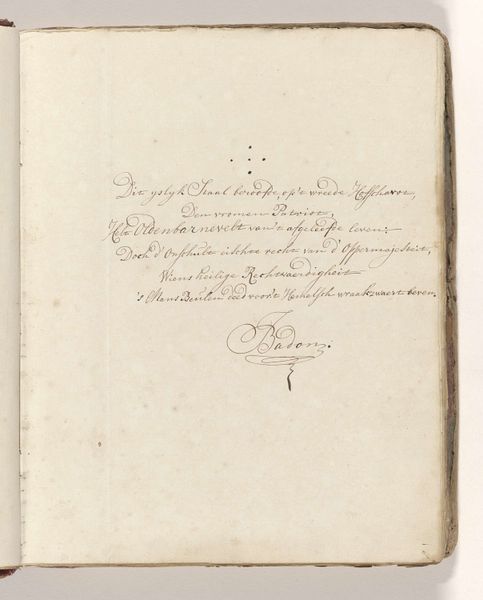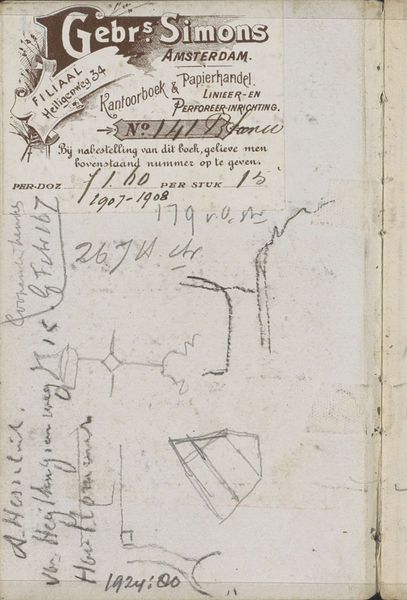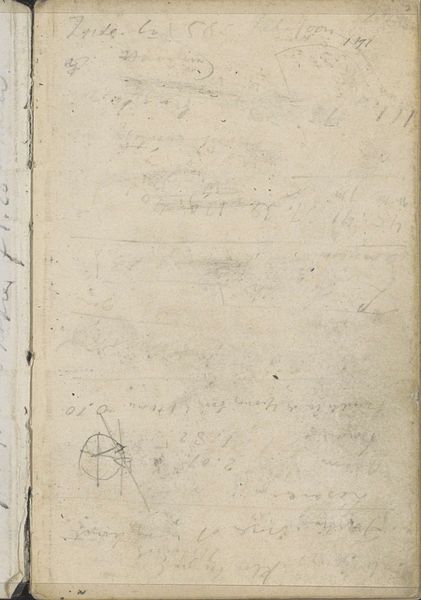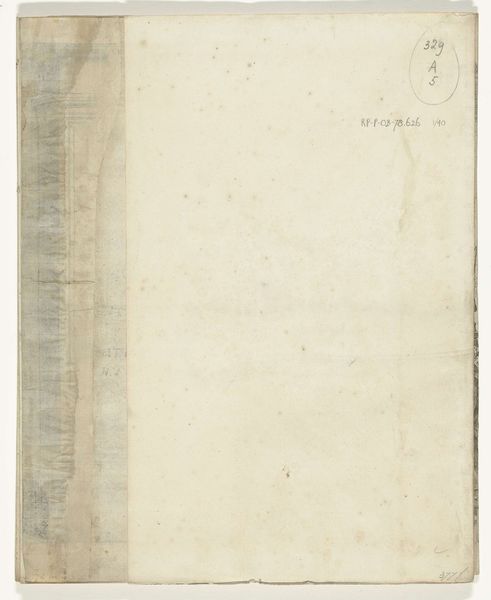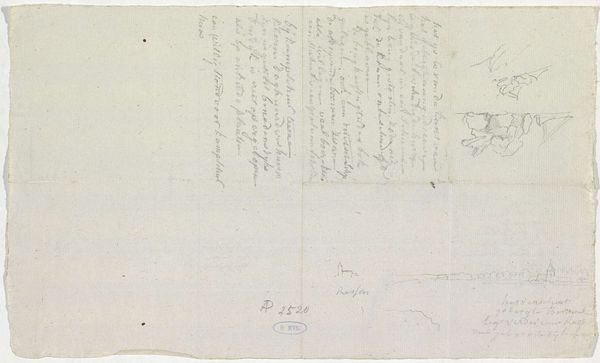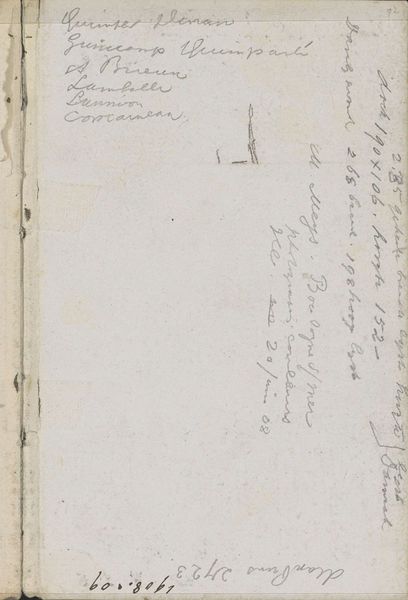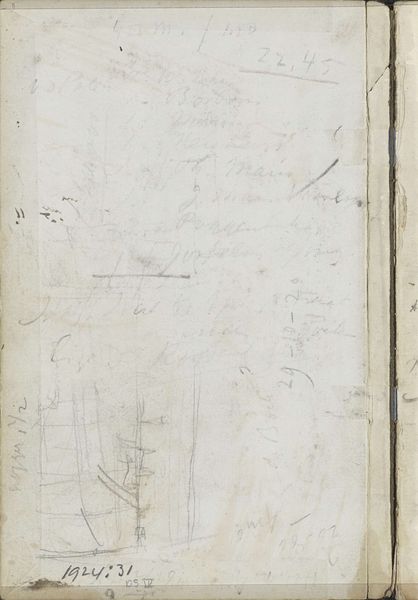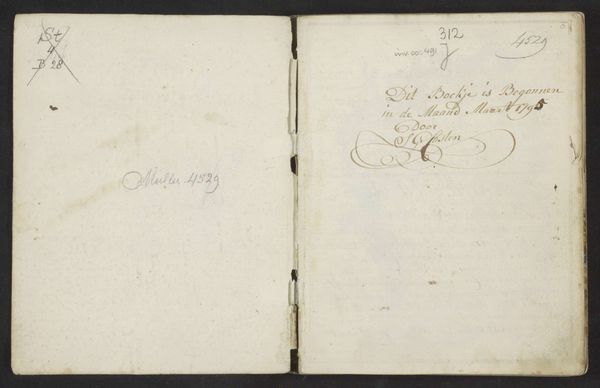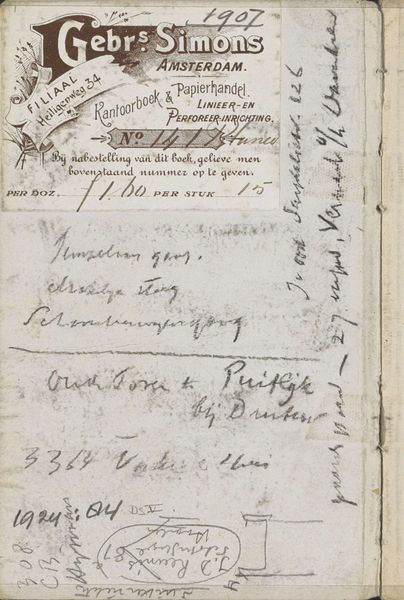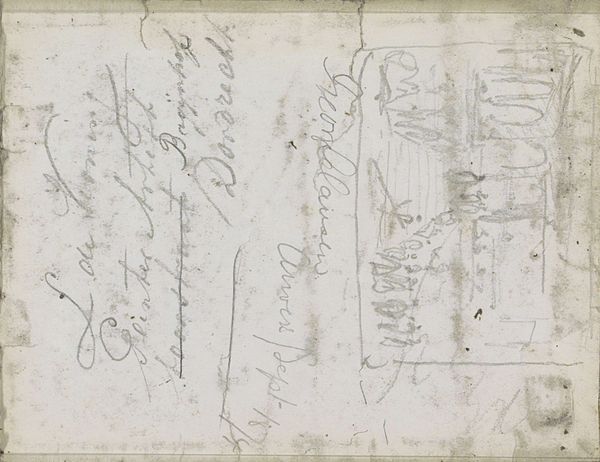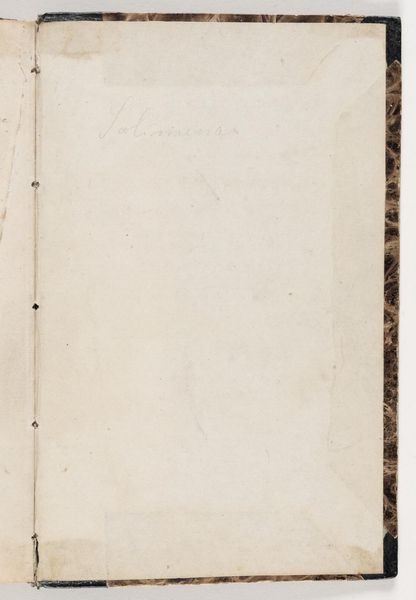
drawing, paper, ink
#
drawing
#
dutch-golden-age
#
paper
#
ink
#
coloured pencil
#
genre-painting
#
calligraphy
Dimensions: height 275 mm, width 220 mm
Copyright: Rijks Museum: Open Domain
Curator: Immediately, the texture of the aged paper draws my attention. It’s almost palpable, a whisper from centuries past. Editor: Indeed, what we see here is a letter, penned by Arnold Hoogvliet, most likely around 1745, addressed to Frans Greenwood. It's created with ink on paper. Curator: The faded ink hints at intimacy and social hierarchy. It reminds us of the power dynamics inherent in correspondence of the era. Editor: The looping script evokes specific symbols. Look at the flourishes in Hoogvliet's handwriting. Note the elegant curves; consider the way he emphasizes certain words through the height of his loops. Calligraphy itself held symbolic importance, reflecting social status, education, and the values associated with thoughtful composition. Curator: It speaks to me about how even what appear to be casual correspondences still reflect very clear class and educational divides. Who had the luxury of time to cultivate a calligraphic hand, and how might such displays function within Dutch Golden Age social performance? Editor: It shows us what they valued: clarity, elegance, and precision. Each letter perfectly formed. It shows us there's both skill and artistry on display. Letters become small artifacts carrying the values and visual culture from this time. Curator: Viewing such intimate missives today underscores both connection and loss. We stand outside the closed networks in which this message was relevant. Editor: This artwork evokes contemplation about time and connection across centuries through simple symbols in paper and ink. The message has faded in its legibility, but it communicates a past world. Curator: Absolutely. For me, its fragmented readability creates an impression of cultural loss and temporal distance—of voices fading.
Comments
No comments
Be the first to comment and join the conversation on the ultimate creative platform.
